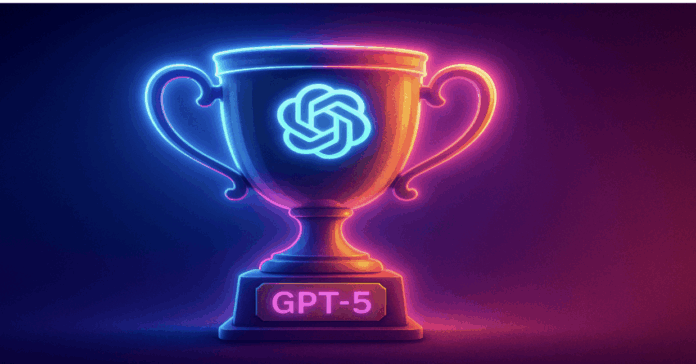When GPT-5 hit the LMM Arena charts, it didn’t just place high – it swept the board. Developers, marketers, even small founders are buzzing about how this model outperformed Gemini, Claude, Grok, and every other AI competitor across all categories: coding, creative writing, long queries, instruction following. For the first time, one model feels like the default tool for everyone who builds, tests, and experiments with AI Software and Cloud systems. And unlike most enterprise launches, GPT-5 is free.
The buzz is not hype. On Reddit, Discord, and Twitter, you see developers showing side-by-side tests: old prompts that Claude or ChatGPT-4o struggled with now get polished, context-aware answers. The feeling is that GPT-5 doesn’t just “answer” – it anticipates the gaps, much closer to how a seasoned human would handle complex work.
How developers are actually using GPT-5
One developer from Austin described it simply: “I threw my broken pipeline at GPT-5, and in two replies it fixed what my team had been debugging for two days.”
Another story came from a marketing analyst who rebuilt her reporting dashboard in under an hour. Instead of wrangling SQL manually, she just asked GPT-5 to generate optimized queries and explanations – it nailed them without the hallucinations earlier models produced.
For designers, GPT-5 has become a sketch partner. They type, “give me a Figma-ready layout for a fintech onboarding flow” – and get not just wireframes, but usable components. The cloud integration with code snippets makes it feel less like a chatbot and more like a hybrid developer-designer on demand.
Why GPT-5 feels different
There are three areas where GPT-5 is shocking users:
- Coding reliability – fewer bugs, more structured output, working scripts out of the box.
- Context memory – it can carry longer instructions, track nuance, and doesn’t drop details mid-thread.
- Creative balance – outputs that sound closer to a writer’s draft, not machine filler.
A freelance writer put it this way: “GPT-4o gave me essays I had to rewrite. GPT-5 gives me something I can publish after 20 minutes of polish.”
Chatronix – the smarter way to test GPT-5
Chatronix
Here’s where things get even more interesting. Developers don’t just want to try GPT-5 alone – they want to test it against Claude, Gemini, Grok, and the rest. Inside Chatronix, that’s exactly what they’re doing.
Why? Because Chatronix combines six models in one chat. You type once, and you can:
- Compare GPT-5’s answers against Claude, Gemini, and Grok in seconds.
- Use 10 free requests before committing.
- Switch on Turbo mode for faster, parallel runs.
- See a new feature: One Perfect Answer. Instead of scrolling through six long replies, Chatronix blends them into a single, curated output. It’s like having six experts argue, then giving you the consensus.
Quick comparison table
| Feature | GPT-5 Alone | Chatronix with GPT-5 |
| Model comparison | No | Yes (6 in one) |
| Free requests | No | 10 included |
| Turbo simultaneous runs | No | Yes |
| One Perfect Answer | No | Yes |
For anyone building workflows, this means less time second-guessing which answer is best – and more time shipping.
What this means for AI users
The release of GPT-5 isn’t just about power. It’s about accessibility. A developer in Berlin summed it up: “I don’t need to subscribe to five different models anymore. GPT-5 covers 80% of my work. For the rest, I just test inside Chatronix and move on.”
Writers are cutting drafting time in half. Marketers are automating research they used to outsource for thousands of dollars. Founders are pitching investors with decks GPT-5 structured in a single evening.
And the kicker: no paywall. For now, OpenAI has left GPT-5 open, which is fueling adoption at a speed we haven’t seen since the first viral ChatGPT boom.
Bonus prompt to try today
Ask GPT-5:
“Act like a senior product strategist. Outline a 7-day launch sprint for a SaaS startup, balancing design, code, and marketing milestones.”
This simple test shows why GPT-5 is pulling ahead – it gives you timelines, tradeoffs, and realistic outputs, not just generic steps.
GPT-5 coding cheat sheet
from @OpenAIDevs pic.twitter.com/tJo8I7BT8W
— Dan Mac (@daniel_mac8) August 16, 2025
The bottom line
GPT-5 is setting a new baseline for what people expect from AI. The model isn’t perfect – nothing is – but it’s already replacing tools and workflows that cost real teams thousands each month. And with Chatronix adding the ability to compare, test, and condense multiple models into One Perfect Answer, the AI stack feels less chaotic than ever.
For developers, marketers, and founders, this isn’t hype. It’s leverage. And it’s free.


